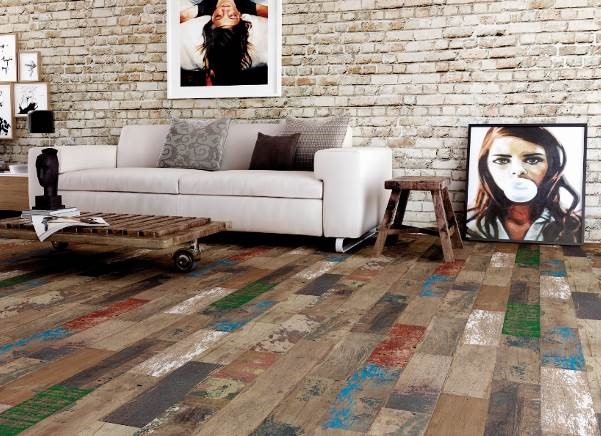Welcome the the third installment of Tile Tuesday. If you missed the last two you can catch them here and here.The second half of my adventure with Tile of Spain took us to Valencia, the location of Cevisama, annual trade show held to showcase the latest innovations introduced by the Spanish tile industry.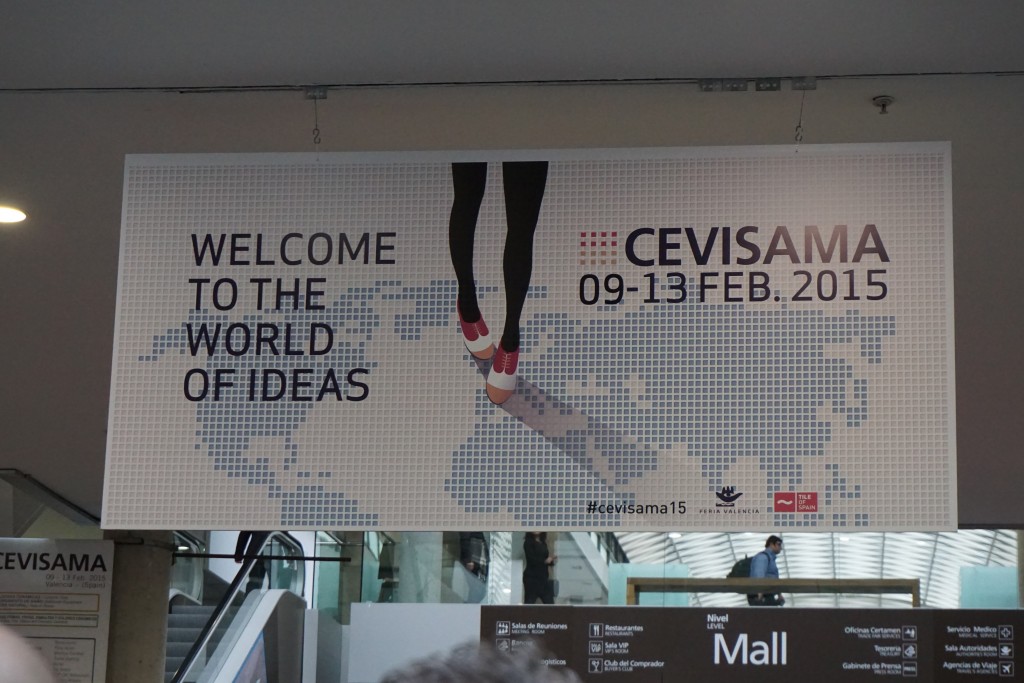 Attending Cevisama was an introduction to a whole world of possibilities! If you’ve been following Tile Tuesday, you already know that ceramic tile is a part of the Spanish culture dating back to Roman and Moorish times. Tile is nothing new but the uses and innovations in the ceramic industry certainly are! In the coming weeks we’ll talk about some of the big trends I saw that you can incorporate into your own kitchen.
Attending Cevisama was an introduction to a whole world of possibilities! If you’ve been following Tile Tuesday, you already know that ceramic tile is a part of the Spanish culture dating back to Roman and Moorish times. Tile is nothing new but the uses and innovations in the ceramic industry certainly are! In the coming weeks we’ll talk about some of the big trends I saw that you can incorporate into your own kitchen.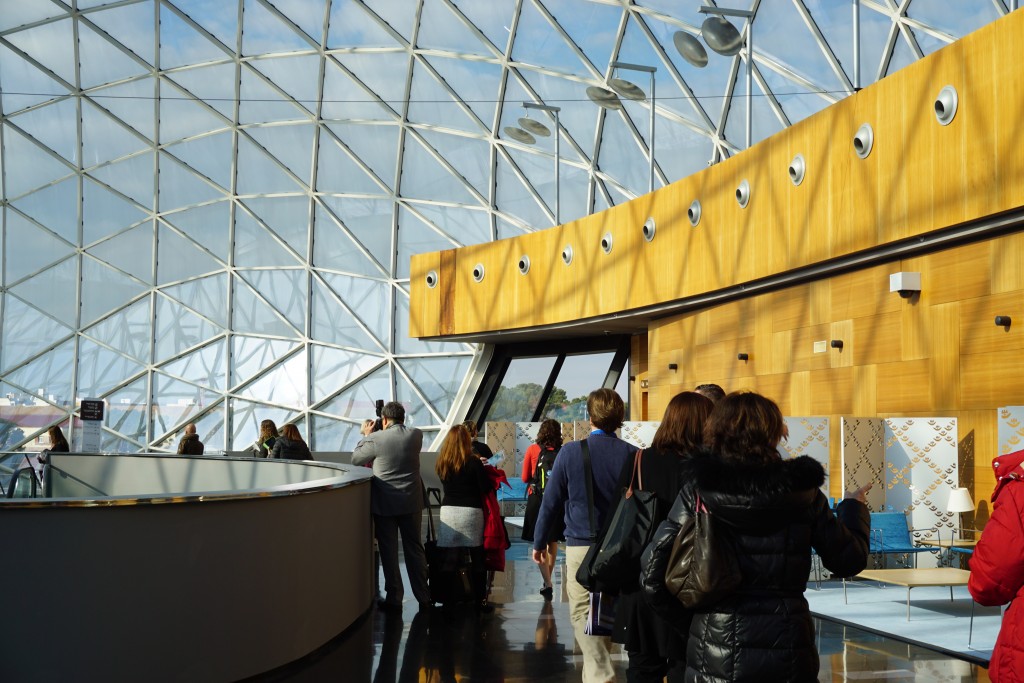 Before we do that let’s cover some good to know, sometimes misunderstood, facts about tile. For your viewing pleasure I have inserted a little eye candy to keep you on your toes!WHAT IS IT?Ceramic tile is a perfect balance of the classical elements of earth (clay), air, water and fire. All are involved in its creation. All tile is made of either red or white clay.
Before we do that let’s cover some good to know, sometimes misunderstood, facts about tile. For your viewing pleasure I have inserted a little eye candy to keep you on your toes!WHAT IS IT?Ceramic tile is a perfect balance of the classical elements of earth (clay), air, water and fire. All are involved in its creation. All tile is made of either red or white clay.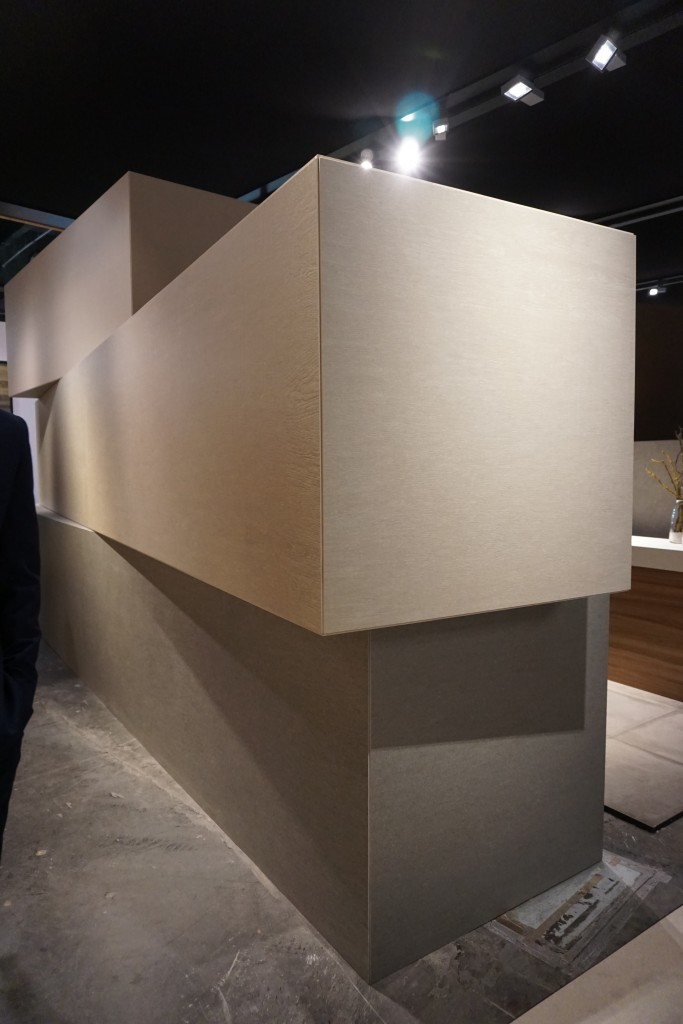 CERAMIC, PORCELAIN OR BOTH?One big question I get regards porcelain vs. ceramic. Guess what? Porcelain tiles ARE ceramic tiles. There is only one technical difference. A tile must have a water absorbtion rate of .05 to be classified as porcelain.
CERAMIC, PORCELAIN OR BOTH?One big question I get regards porcelain vs. ceramic. Guess what? Porcelain tiles ARE ceramic tiles. There is only one technical difference. A tile must have a water absorbtion rate of .05 to be classified as porcelain. 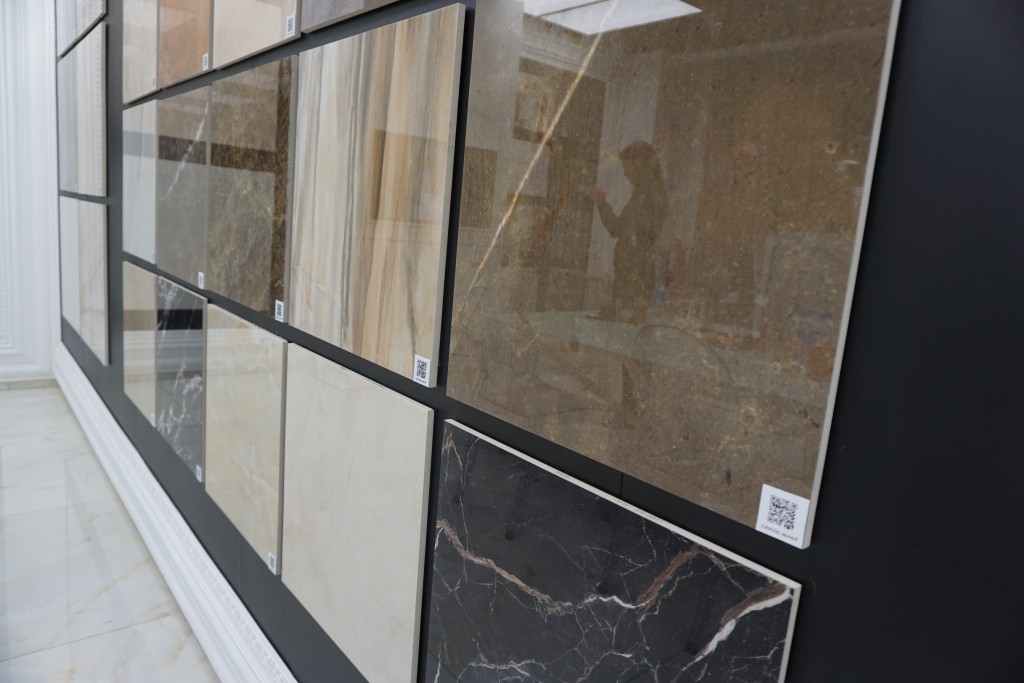 Typically porcelain tiles are denser, less porous and as a result more durable than other ceramics. You can also get them “rectified” which means crisp sharp perfectly squared edges that mean a tight fit with minimal grout lines.IS PORCELAIN THE SAME COLOR ALL THE WAY THROUGH?In the past I believed that a porcelain tile was the same color all the way through so that a small chip would be no big deal but I learned that is not always true. You CAN get something called “through-body porcelain” which means that if the tile is not glazed, the color and texture are consistent all the way through the tile. However porcelain tiles can also have surface glazes and textures that are not “through-body”.
Typically porcelain tiles are denser, less porous and as a result more durable than other ceramics. You can also get them “rectified” which means crisp sharp perfectly squared edges that mean a tight fit with minimal grout lines.IS PORCELAIN THE SAME COLOR ALL THE WAY THROUGH?In the past I believed that a porcelain tile was the same color all the way through so that a small chip would be no big deal but I learned that is not always true. You CAN get something called “through-body porcelain” which means that if the tile is not glazed, the color and texture are consistent all the way through the tile. However porcelain tiles can also have surface glazes and textures that are not “through-body”.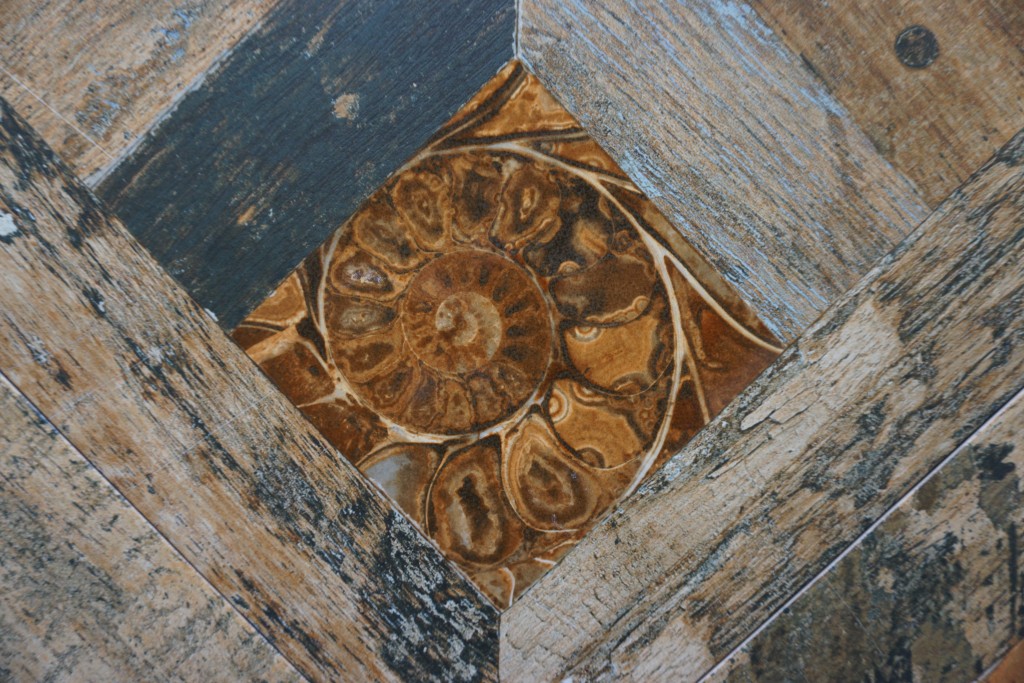 WHERE DOES IT GO?Tiles used for exterior applications are porcelain but not all porcelain tiles are recommended to be used outside. Generally you can put just about any type of tile on the wall but you’re much better off with porcelain on the floor for durability. Remember, although beautiful, glossy finishes are always more slippery than honed, or matte finishes. Got it? Good. Since you made it all the way to the end, I have a special treat for you.
WHERE DOES IT GO?Tiles used for exterior applications are porcelain but not all porcelain tiles are recommended to be used outside. Generally you can put just about any type of tile on the wall but you’re much better off with porcelain on the floor for durability. Remember, although beautiful, glossy finishes are always more slippery than honed, or matte finishes. Got it? Good. Since you made it all the way to the end, I have a special treat for you.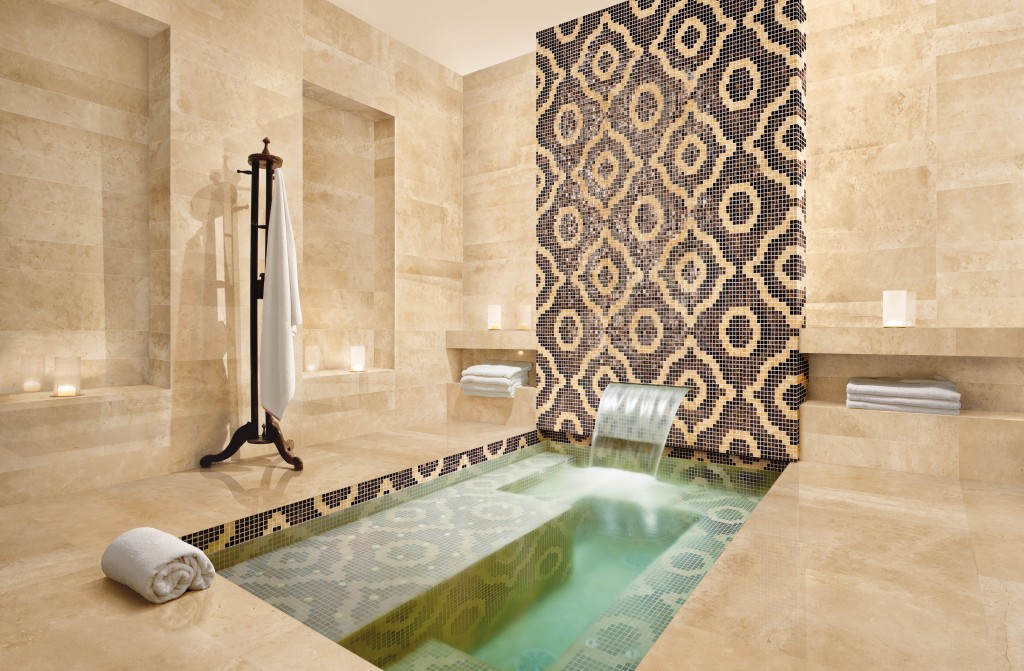 Next Tile Tuesday: Uncovering Valencia with Tile of Spain, perhaps another video slideshow??
Next Tile Tuesday: Uncovering Valencia with Tile of Spain, perhaps another video slideshow??
Tile Tuesday: The Inspiration of Antiquity
Welcome Tile Tuesday! This is the first installment of a series inspired by my discoveries exploring Seville and Valencia, Spain with Tile of Spain. Not only did we attend Cevisama, the renowned trade fair showcasing the best of the Spanish tile industry, we also explored two cities, their history, culture and architecture with two very passionate local architects. Along the way I learned a lot about ceramic tile in general and that was one of my goals for this trip. Each Tuesday I will be sharing something interesting about tile and the cities we visited. Ceramic tile is the product of the culture in which it is made. Whether you’re talking 1300s or today, tile really is an artefact of the time in which it was produced.
Along the way I learned a lot about ceramic tile in general and that was one of my goals for this trip. Each Tuesday I will be sharing something interesting about tile and the cities we visited. Ceramic tile is the product of the culture in which it is made. Whether you’re talking 1300s or today, tile really is an artefact of the time in which it was produced.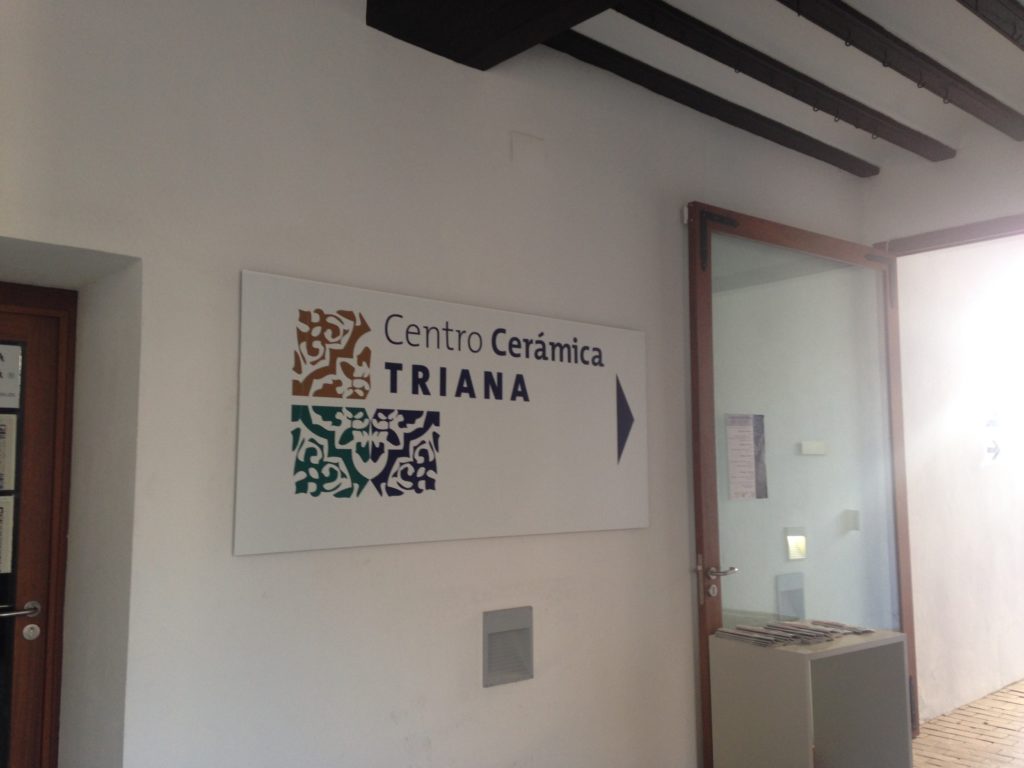 Even the examples we saw of cutting edge 21st century Spanish tile manufacturers such as Peronda, Inalco, Aparici and more have their roots in a much older tradition. What better place to begin than at the beginning. Our adventure started in Seville with a visit to Centro Ceramica Triana, a ceramic museum which was once a tile factory.
Even the examples we saw of cutting edge 21st century Spanish tile manufacturers such as Peronda, Inalco, Aparici and more have their roots in a much older tradition. What better place to begin than at the beginning. Our adventure started in Seville with a visit to Centro Ceramica Triana, a ceramic museum which was once a tile factory.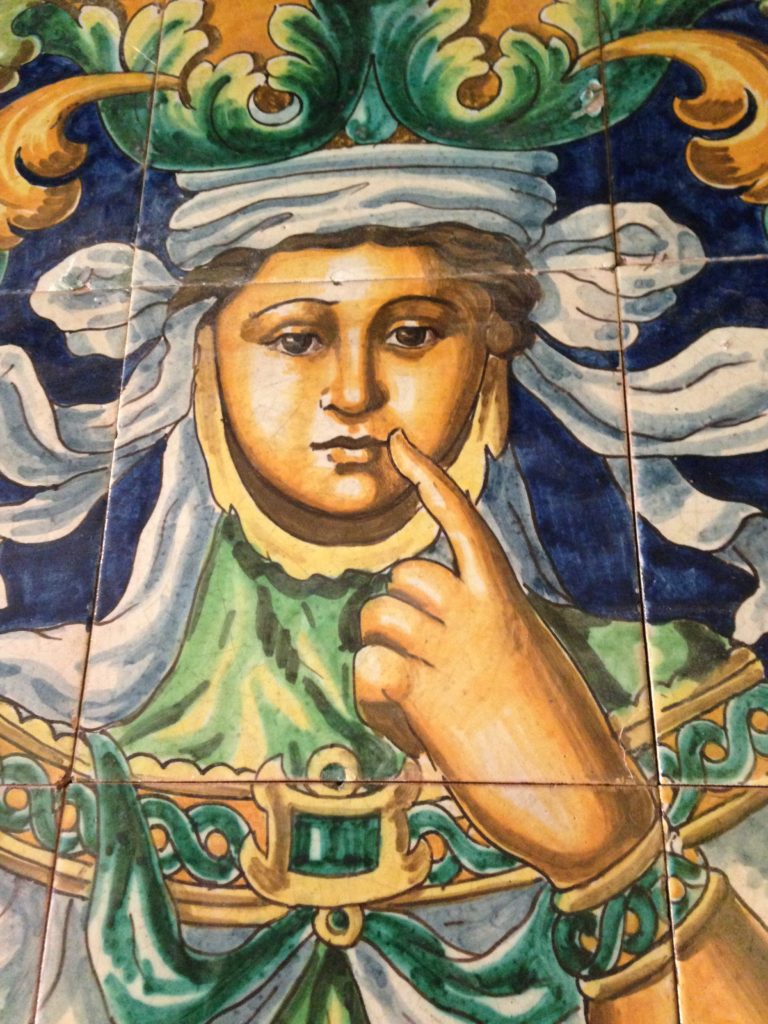 Several years ago the city of Sevilla wisely decided to preserve and showcase the old Santa Ana Ceramic Factory, which itself was built upon centuries old prior factories.Last year it was opened to the public. What intrigued me the most is that this museum is a structure consisting of layers. You can find antiquity dating back to the 16th century on the bottom followed my those of the following centuries above it. Architecture is honored. What has come before is respected and preserved. The new lives together with the old throughout Spain and this museum is a perfect example of that.
Several years ago the city of Sevilla wisely decided to preserve and showcase the old Santa Ana Ceramic Factory, which itself was built upon centuries old prior factories.Last year it was opened to the public. What intrigued me the most is that this museum is a structure consisting of layers. You can find antiquity dating back to the 16th century on the bottom followed my those of the following centuries above it. Architecture is honored. What has come before is respected and preserved. The new lives together with the old throughout Spain and this museum is a perfect example of that.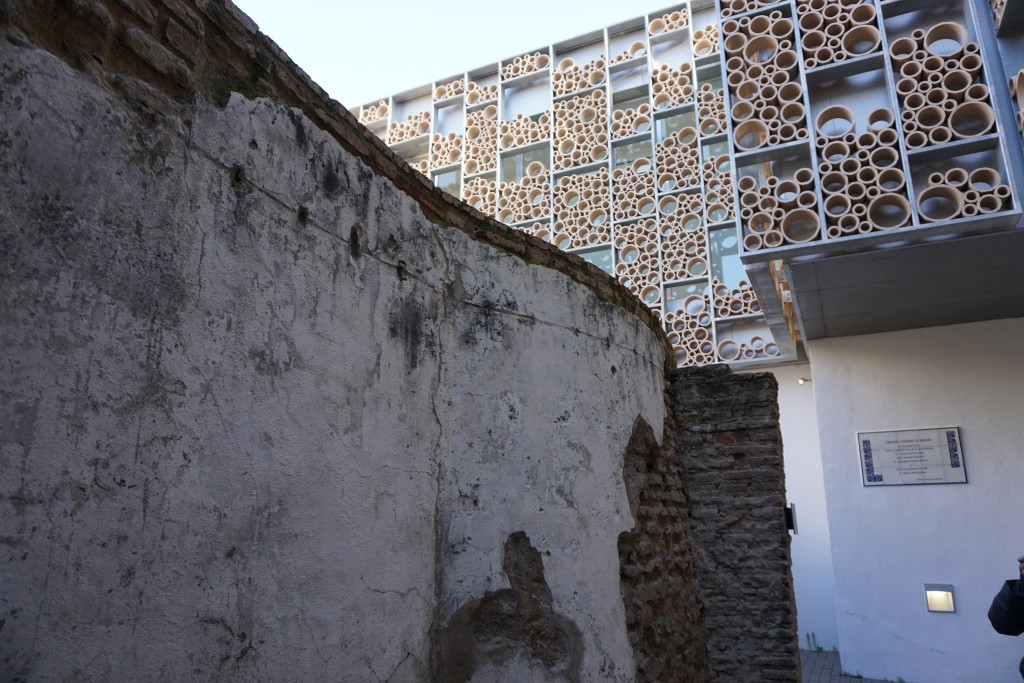 Run by Enrique Rodgriguez Garcia, Santa Ana was still a productive factory up until the seventies. They survived up until that point selling all genres of ceramics including murals, shop signs, pottery, lettering, and religious items. Garcia passed away in 2005 but has left his artisan legacy to his descendants.
Run by Enrique Rodgriguez Garcia, Santa Ana was still a productive factory up until the seventies. They survived up until that point selling all genres of ceramics including murals, shop signs, pottery, lettering, and religious items. Garcia passed away in 2005 but has left his artisan legacy to his descendants.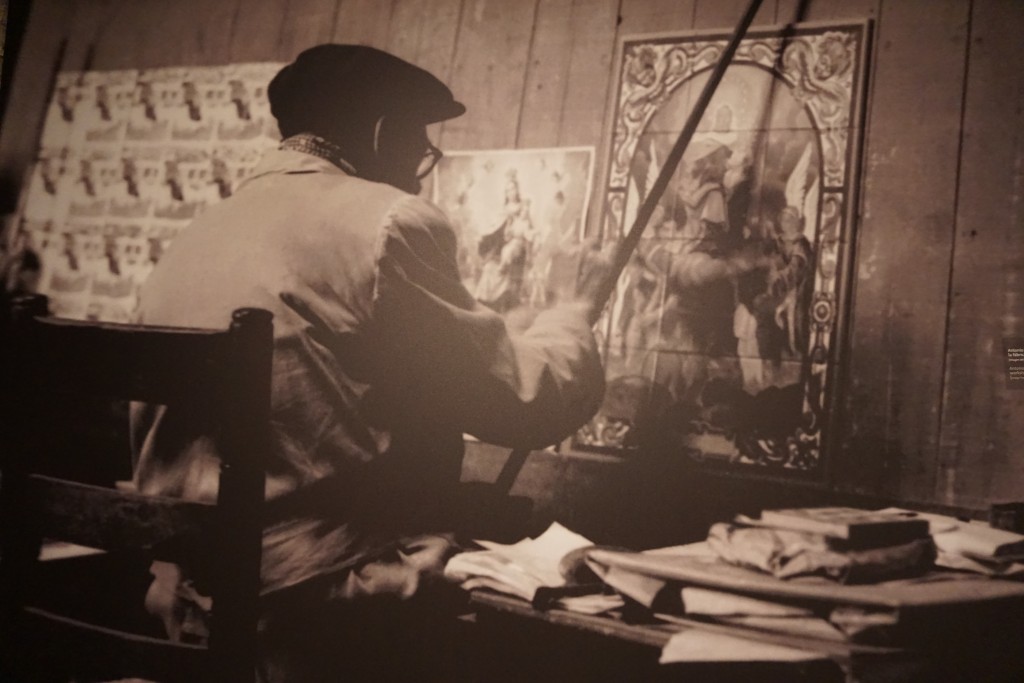
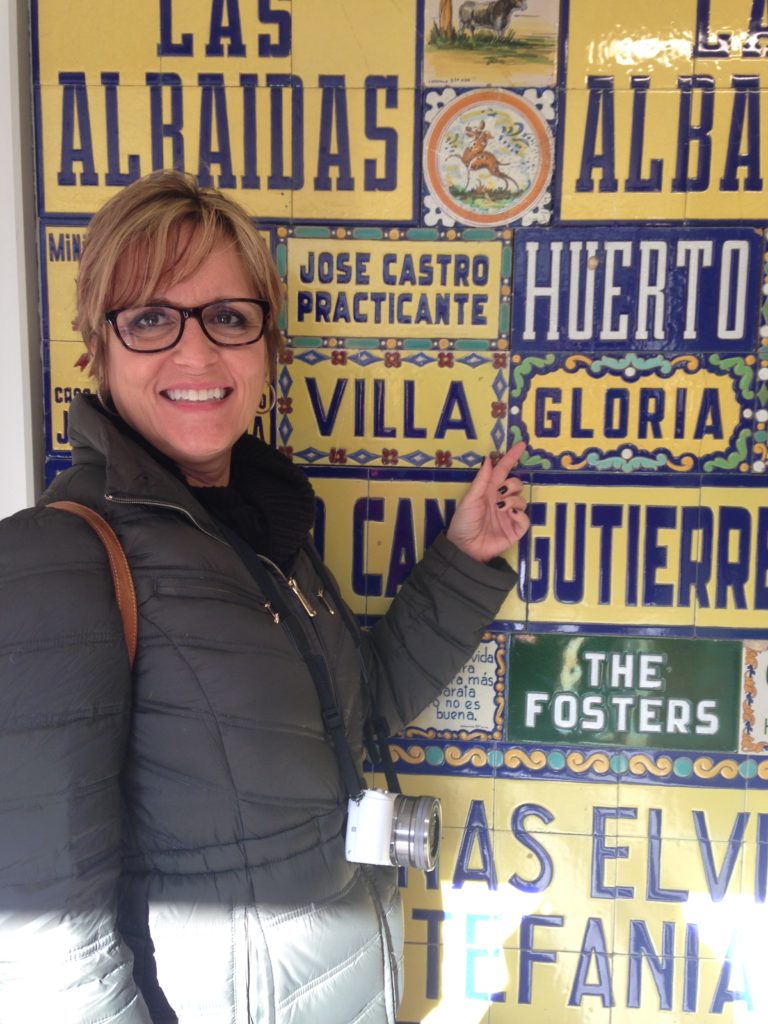 The barrio of Triana sits on the banks of the River Guadalquivir. The ceramic industry, which dates back to Roman times, grew here, in this neighborhood, due to the proximity of natural clay resources. In addition, it is interesting to note that most ceramic glazes come from Spain. This film, by Direccion TVArq, gives you a real feel for the space, outlining the blend between the modern museum and the antiquity revealed below. Note the original 16th century kilns and if you are fortunate enough to speak Spanish you will hear about the history of the site and the process of creating the current museum.
The barrio of Triana sits on the banks of the River Guadalquivir. The ceramic industry, which dates back to Roman times, grew here, in this neighborhood, due to the proximity of natural clay resources. In addition, it is interesting to note that most ceramic glazes come from Spain. This film, by Direccion TVArq, gives you a real feel for the space, outlining the blend between the modern museum and the antiquity revealed below. Note the original 16th century kilns and if you are fortunate enough to speak Spanish you will hear about the history of the site and the process of creating the current museum.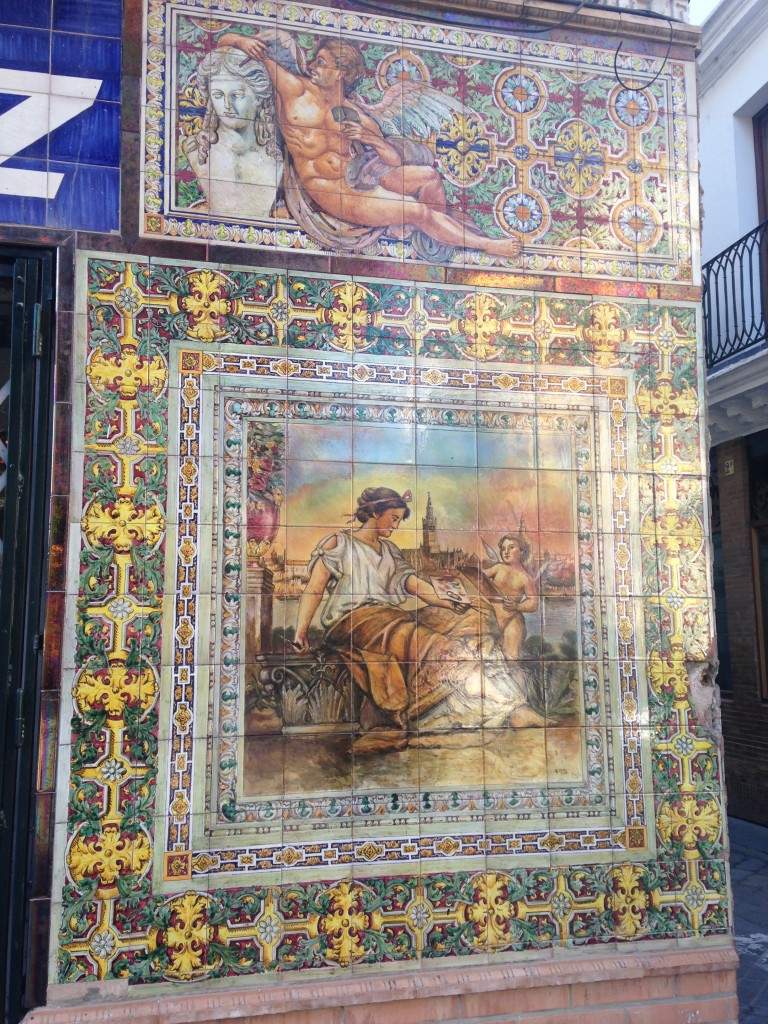
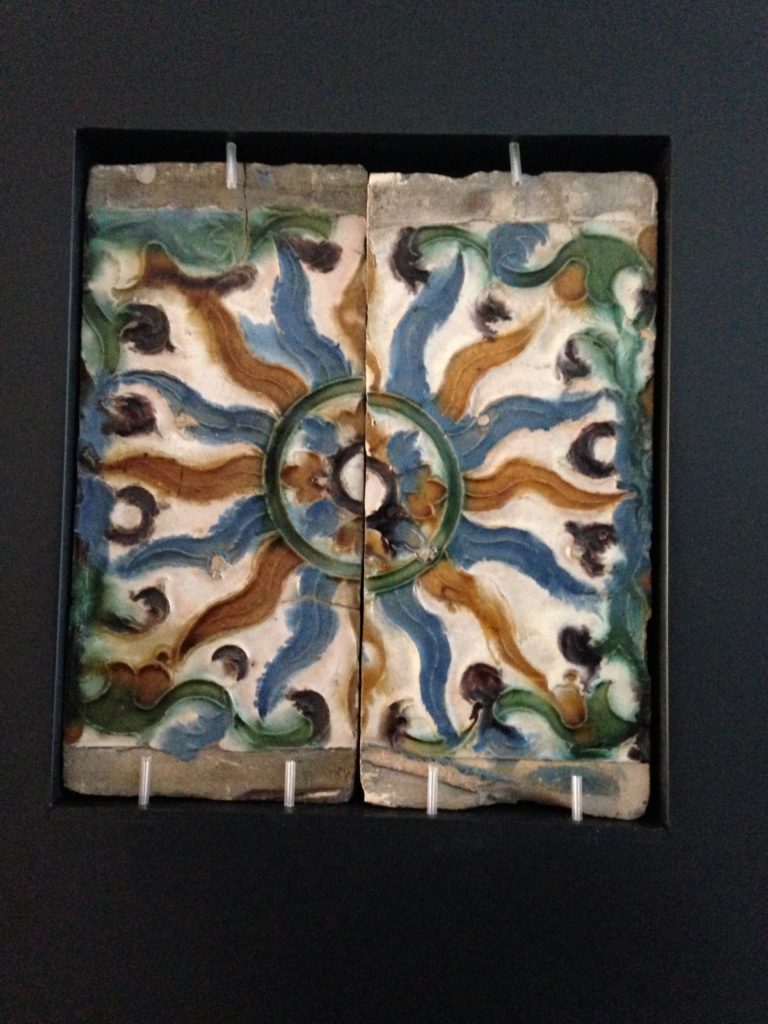 There are many ways to form and decorate clay to create ceramic tile. Niculoso Francisco Pisano, born and trained in Italy, lived and worked in Triana in the early 1500s. He devised a way of mass producing tiles. This is piece circa 1529 is one of the examples from his workshop.
There are many ways to form and decorate clay to create ceramic tile. Niculoso Francisco Pisano, born and trained in Italy, lived and worked in Triana in the early 1500s. He devised a way of mass producing tiles. This is piece circa 1529 is one of the examples from his workshop.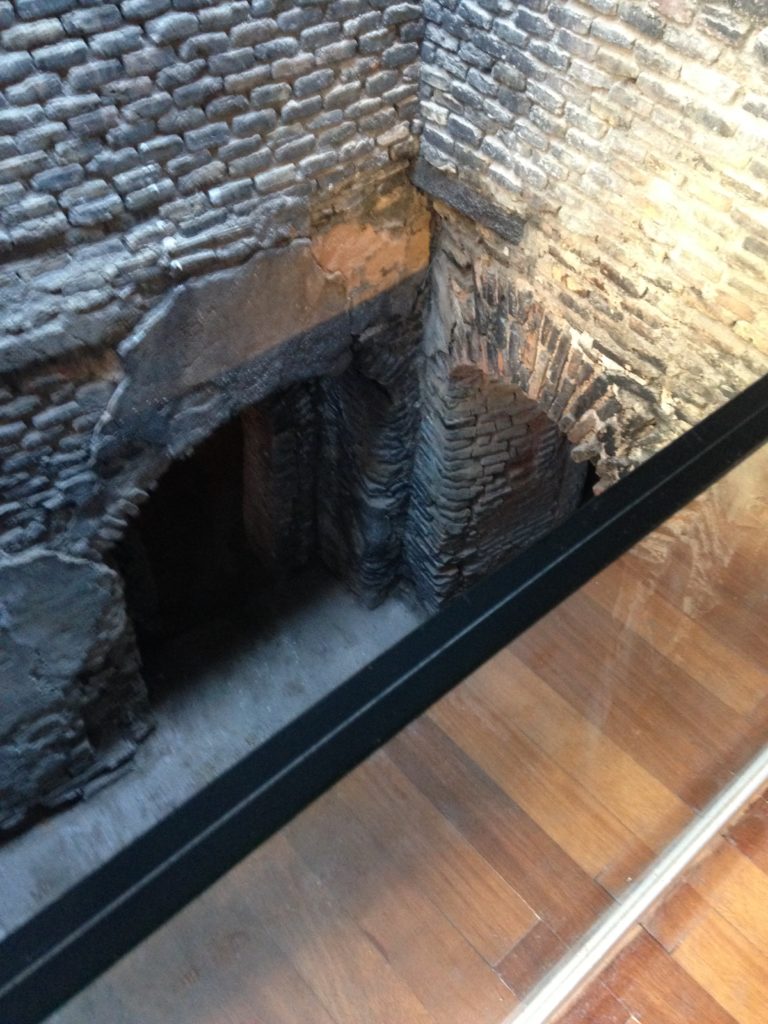 Ceramic tile is a creation of clay, earth, water, air and fire, a perfect balance of elements. I felt a soulfulness about this place, a passion for artisanship that lingers.Next Tile Tuesday: A look at Metropol Parasol, feat of engineering or folly?https://www.facebook.com/kitchensforliving
Ceramic tile is a creation of clay, earth, water, air and fire, a perfect balance of elements. I felt a soulfulness about this place, a passion for artisanship that lingers.Next Tile Tuesday: A look at Metropol Parasol, feat of engineering or folly?https://www.facebook.com/kitchensforliving
Spanish Style 2015
As you are reading this I'm probably winging my way across the Atlantic, heading to the Passport to Creativity 2015 event courtesy of Tile of Spain. We will be exploring Seville and then on to Valencia to attend Cevisama, Spain's international tile trade fair showcasing the latest in tile products and design trends. Follow me on FaceBook, Instagram and Twitter for live reports and I'll be recapping all right here upon my return. For now, here's a sneak preview of some of what we'll be seeing (just to get you in the mood).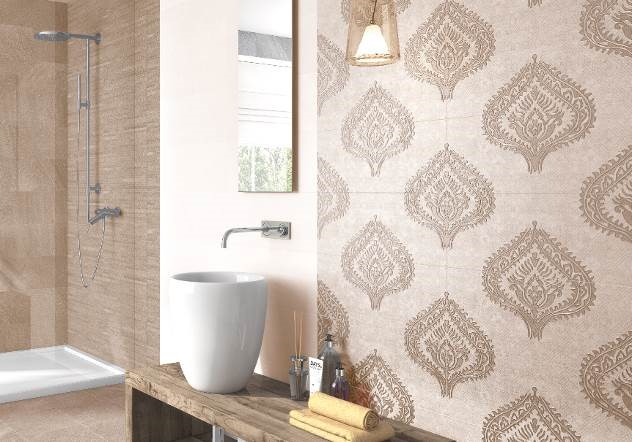
Color palettes include monochromatic color schemes where one hue is carried throughout with subtle changes in texture and pattern. This is a great way to tie a room together creating a harmonious whole. Looks like "greige" strikes again here!
But if you're not so subtle there are lots of bright color choices too! I'm loving the originality, not to mention the forgiving nature of this new porcelain tile! Organically inspired tile is taking a cue from nature for a very authentic wood look. In addition, there are lots of choices for mosaics. The point is all the elements are there for you to make a unique and very personal statement with tile.
Click here for more info about Tile of Spain and where you can get the latest tile.

